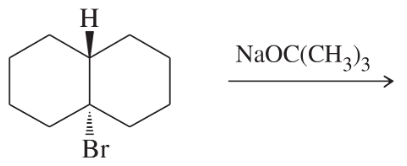For each reaction, decide whether substitution or elimination (or both) is possible, and predict the products you expect. Label the major products.
a. 1−bromo−1−methylcyclohexane + NaOH in acetone

 Verified step by step guidance
Verified step by step guidance Verified video answer for a similar problem:
Verified video answer for a similar problem:



 2:27m
2:27mMaster Overview of the flowchart. with a bite sized video explanation from Johnny
Start learning